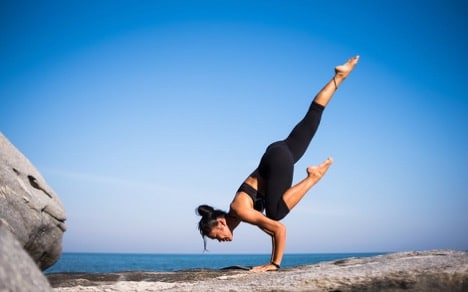Fitness doesn’t have to be expensive—or complicated. Whether you’re just starting out or refining a home gym, the right tools can boost your results without draining your wallet. But with thousands of options out there, how do you know which fitness gear is actually worth it? Let’s cut through the clutter and focus on what truly matters: affordability, functionality, and fit for your goals.
Why the Right Fitness Tools Matter More Than You Think
Sure, you could stick to bodyweight workouts—but the right tools can supercharge your progress. Resistance bands, for example, add intensity without bulk. A sturdy bench opens the door to dozens of strength-building movements. Smart fitness gear isn’t just about convenience—it helps prevent injury, target specific muscle groups, and keep you motivated. Think of them as your silent workout partners, each designed to challenge you just enough to spark growth.
What to Consider Before Buying Fitness Equipment
1. Know Your Target: Which Body Part Are You Training?
One-size-fits-all rarely works in fitness. Want to build upper body strength? Dumbbells or resistance bands might be your go-to. Focused on core stability? A gym ball or balance board could be ideal. Before buying anything, ask yourself: What part of my body needs the most work—or attention?
If you’re aiming for full-body workouts, look for versatile tools that work multiple muscle groups. Adjustable dumbbells, kettlebells, and resistance bands are solid choices. But if you’re targeting specific areas (say, glutes or shoulders), consider specialized gear to get the most efficient results.
2. Be Real About Your Space
Don’t underestimate how much room you’ll need. That foldable treadmill might sound appealing—until you realize you have nowhere to store it. Always measure the area where you’ll both use and store your equipment.
Compact tools like resistance bands, yoga mats, or even kettlebells are perfect for small spaces. For bulkier equipment like benches or bikes, ask yourself: Will this fit in my routine *and* my living room?
3. Flexibility Is Key—Literally
The more ways you can use a single piece of equipment, the more value it brings. Resistance bands, for example, can be used for upper body workouts, glute activation, mobility training—you name it. Adjustable dumbbells give you the range of an entire rack without the bulk.
Especially if you’re on a budget or live in a small space, multi-functional tools are game changers. Look for gear that adapts with your fitness level and lets you switch up your routine without having to buy something new every month.
4. What Are Other People Saying?
Before clicking “Buy Now,” take a few minutes to check the reviews. Not the ones written five minutes after the package arrived—but the ones that talk about long-term use, durability, and customer service. Pay attention to recurring praise or complaints. If several people say the resistance band snapped after a week, that’s a red flag.
Reddit forums, YouTube gear reviews, and fitness blogs can also provide honest insights that aren’t always visible on product pages. Use that collective experience to your advantage.
5. Set a Budget—and Stick to It
It’s tempting to believe that higher price = better quality. Sometimes that’s true—but not always. A $20 resistance band set could outlast a $200 smart dumbbell if the cheaper product is better made. So, establish a budget upfront, but stay flexible if something offers significantly more value.
Keep in mind: “affordable” doesn’t mean “cheap.” You’re investing in your health, not bargain-hunting at a yard sale. Look for a balance of quality and cost. Check for warranties, materials used, and brand reputation before you swipe that card.
Affordable Fitness Tools Worth Every Penny
Here’s a list of fitness tools that offer high value without high prices. Many of these are recommended by personal trainers and used in both commercial gyms and home setups:
- Resistance Bands: Ultra-versatile and portable. Great for beginners and pros.
- Dumbbells: Adjustable sets are budget-friendly and space-saving.
- Yoga Mats: Essential for comfort during floor work, stretching, and bodyweight exercises.
- Kettlebells: Ideal for functional strength, cardio, and flexibility training.
- Exercise Bikes: Effective for cardio without leaving home. Look for foldable models if space is tight.
- Benches: Expand your strength training options. Adjustable models increase versatility.
- Stair Steppers: A compact cardio tool that targets legs and glutes.
- Rowing Machines: A full-body cardio powerhouse. Great ROI if used consistently.
- Gym Balls: Excellent for core, balance, and stretching routines.
- Resistance Tubing: Similar to bands but with handles for added grip and control.
Final Thought: Build Your Body—Your Way
The best fitness tool isn’t the most expensive one. It’s the one you’ll actually use. Don’t fall for hype or fads. Know your goals, respect your space and budget, and choose gear that fits your lifestyle. Start small, build consistency, and invest in tools that evolve with you.
And remember: your body is already your greatest tool. Everything else just makes the journey more exciting.
- How Automated Dispensing Cabinets (ADCs) revolutionized point-of-care medication administration? - November 23, 2021
- How to Select the Best and Most Affordable Fitness Tools - October 31, 2021
- What is Causing the Trend of Nursing Turnover and How to Stop It - August 24, 2021


